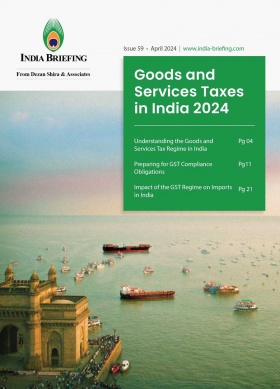Newly Sanctioned India Railway Projects Expected to Boost Connectivity, Improve Logistics
Eight new railway line projects have received approval in India with the aim of enhancing nation-wide connectivity, reducing logistics costs, and supporting economic growth. The sanctioned projects are expected to boost transportation networks by connecting previously unlinked areas, leading to more efficient supply chains, and lowering logistics costs.
To reduce India’s reliance on oil imports and improve connectivity, the central government has approved eight new railway projects, with a strong emphasis on the development of the eastern states of the country.
The projects, announced on August 9, 2024, are part of the PM-Gati Shakti National Master Plan. India launched the Gati Shakti National Master Plan on October 13, 2021, with the goal of transforming the nation’s infrastructure. Valued at INR 100 trillion (US$1.19 trillion), this ambitious project aims to streamline the implementation of infrastructure projects, reduce completion times, and enhance India’s market competitiveness.
Expanding India’s crucial freight routes
Spanning 14 districts in seven states—Odisha, Maharashtra, Andhra Pradesh, Jharkhand, Bihar, Telangana, and West Bengal—the projects will extend the Indian Railways network by 900 kilometers and include the construction of 64 new stations.
|
New railway line route |
Length of line (km) |
Districts covered |
States |
|
Gunupur-Therubali (New Line) |
73.62 |
Rayagada |
Odisha |
|
Junagarh-Nabrangpur |
116.21 |
Kalahandi and Nabrangpur |
Odisha |
|
Badampahar – Kandujhargarh |
82.06 |
Keonjhar and Mayurbhanj |
Odisha |
|
Bangriposi – Gorumahisani |
85.60 |
Mayurbhanj |
Odisha |
|
Malkangiri – Pandurangapuram (via Bhadrachalam) |
173.61 |
Malkangiri, East Godavari and BhadradriKothagudem |
Odisha, Andhra Pradesh and Telangana |
|
Buramara – Chakulia |
59.96 |
East Singhbhum, Jhargram and Mayurbnanj |
Jharkhand, West Bengal and Odisha |
|
Jalna – Jalgaon |
174 |
Aurangabad |
Maharashtra |
|
Bikramshila – Katareah |
26.23 |
Bhagalpur |
Bihar |
Source: Press Information Bureau
These railway routes are crucial for transporting various commodities like agricultural products, fertilizer, coal, iron ore, steel, cement, bauxite, limestone, aluminium powder, granite, ballast, containers etc. The increased capacity is expected to handle an additional 143 million tonnes of freight annually. Additionally, India is looking to tap into the potential of rail transport for its energy-efficient nature that can help the country meet its climate goals, reduce oil imports by 322 million liters, and lower CO2 emissions by 0.87 million tonnes.
These developments will improve access for six aspirational districts and connect about 510 villages, benefiting a population of roughly 4 million. Additionally, the Ajanta Caves, a UNESCO World Heritage site, will be linked to the railway network, enhancing tourism.
Railway sector’s growth and digital transformation
India’s railway sector has seen significant growth in freight performance, with revenues reaching around INR 2.56 trillion (US$30.4 billion) and freight loading exceeding 1,580 million tonnes. This upward trend, which began in September 2020, highlights the consistent excellence in operations. The 10 percent growth in the Net Tonne Kilometer (NTKM) metric has played a crucial role in boosting overall revenue, demonstrating the effectiveness of strategies aimed at improving financial performance and operational efficiency.
In FY 2023-24, the sector made significant progress in capital expenditure projects, including network electrification, track commissioning, automatic signaling, and bridge construction. With logistics costs accounting for approximately 8.9 percent of India’s GDP, particularly due to high fuel prices and heavy reliance on crude oil imports, a shift towards rail transportation is crucial.
The rapid digitalization of India’s railway sector, marked by the adoption of advanced technologies like the Internet of Things (IoT) in rolling stock operations and infrastructure management, is transforming the industry. Innovations such as real-time train information systems and remote monitoring of locomotives are enhancing efficiency and passenger experience. Additionally, over 38,000 kilometers of tracks have been electrified since 2014, representing significant progress.
(US$1 = INR 83.96)
About Us
India Briefing is one of five regional publications under the Asia Briefing brand. It is supported by Dezan Shira & Associates, a pan-Asia, multi-disciplinary professional services firm that assists foreign investors throughout Asia, including through offices in Delhi, Mumbai, and Bengaluru in India. Readers may write to india@dezshira.com for support on doing business in India. For a complimentary subscription to India Briefing’s content products, please click here.
Dezan Shira & Associates also maintains offices or has alliance partners assisting foreign investors in China, Hong Kong SAR, Dubai (UAE), Indonesia, Singapore, Vietnam, Philippines, Malaysia, Thailand, Bangladesh, Italy, Germany, the United States, and Australia.
- Previous Article Profiling India-Italy Trade and Commercial Relations
- Next Article More Women Engaged in Manufacturing Activities in India: MoSPI Report








